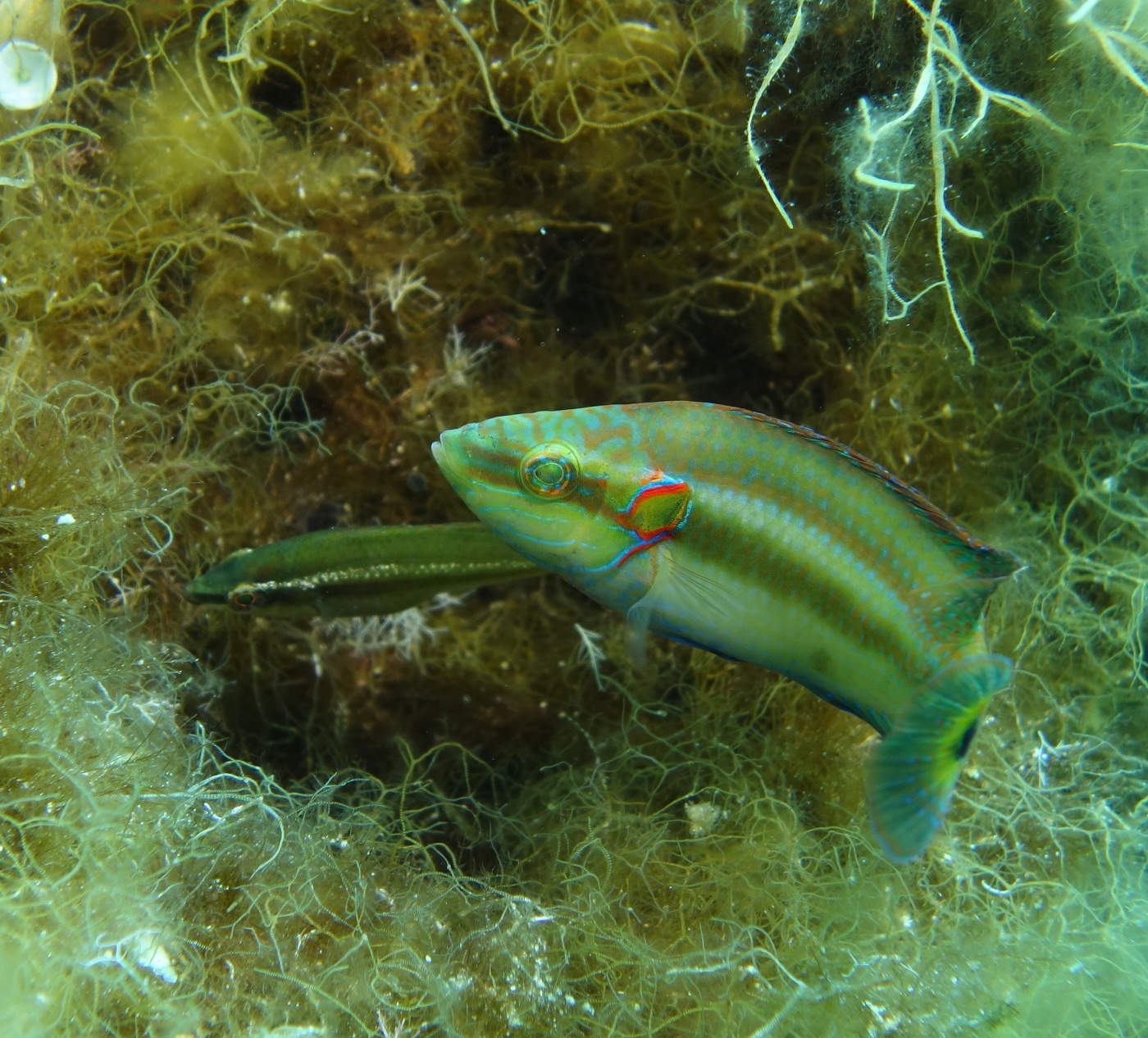Fishy behavior

It might seem unlikely that fish have much to teach us when it comes to parenting. Most don’t, and when they do, the father usually parents solo. However, as shown by the research of Suzanne Alonzo, professor of evolutionary biology, studying the reproductive habits of fish can offer insights into the evolution of our own.
Fish make useful models for this work for many reasons, Alonzo said. “When you think about reproductive systems, fish pretty much do it all.” While some change sex throughout their lifetimes, others are male and female at the same time. And while some keep it simple, just releasing eggs and sperm into the water column, others engage in complex mating rituals involving social interaction and cooperation among several individuals.

The ocellated wrasses (Symphodus ocellatus) studied by Alonzo fall into the latter, more complicated camp. Three types of males—nesting, satellite, and sneaker—compete for the favors of females, but only nesting males parent the offspring. When these fish prepare to mate, unrelated nesting and satellite males—despite being competitors themselves—will team up to keep sneaker males away from potential mates. While hard to explain from an evolutionary perspective, this blend of cooperation and competition is observed across taxa from insects all the way up to mammals, Alonzo said, adding an intriguing twist to the science of seduction.
—Annie Roth

